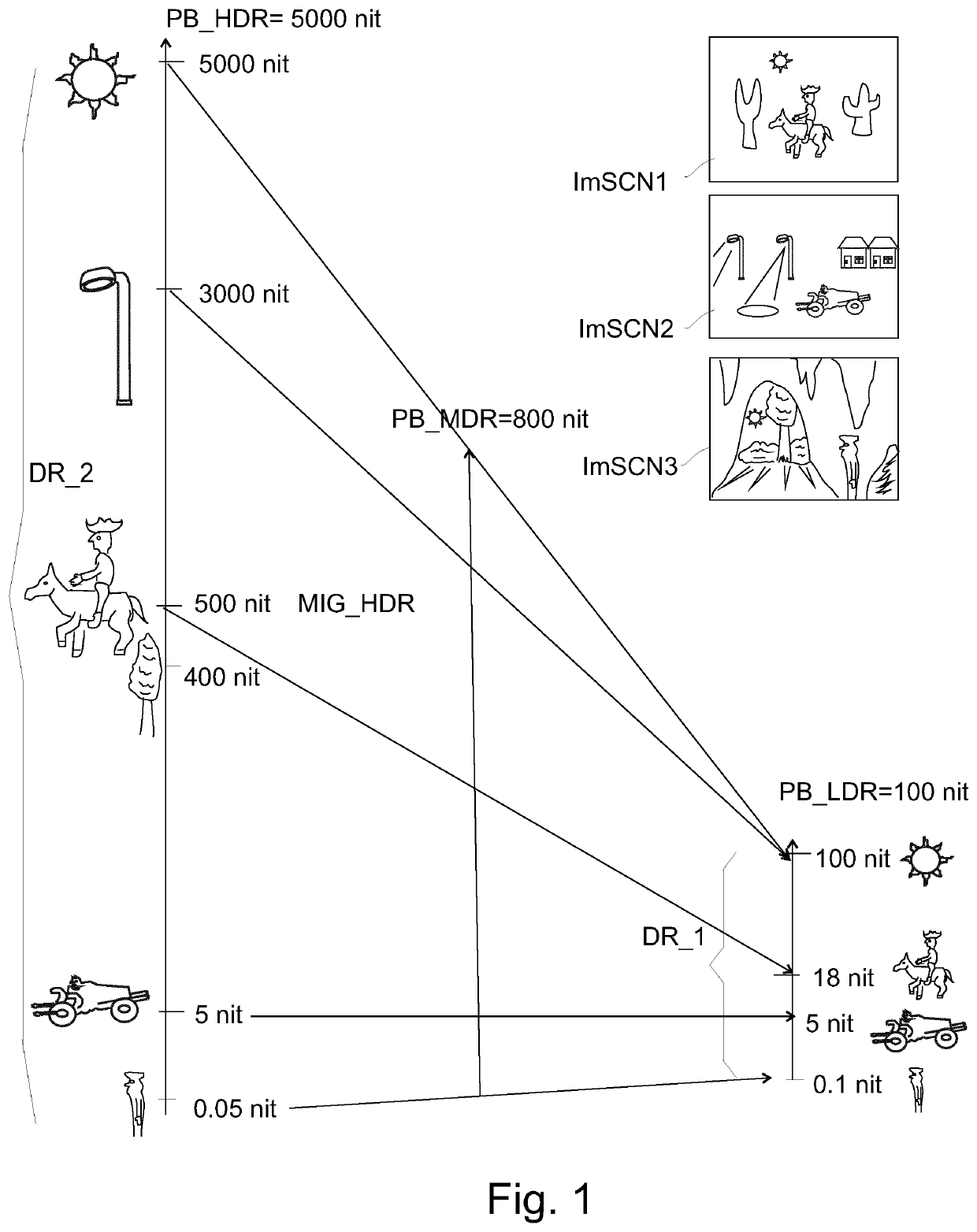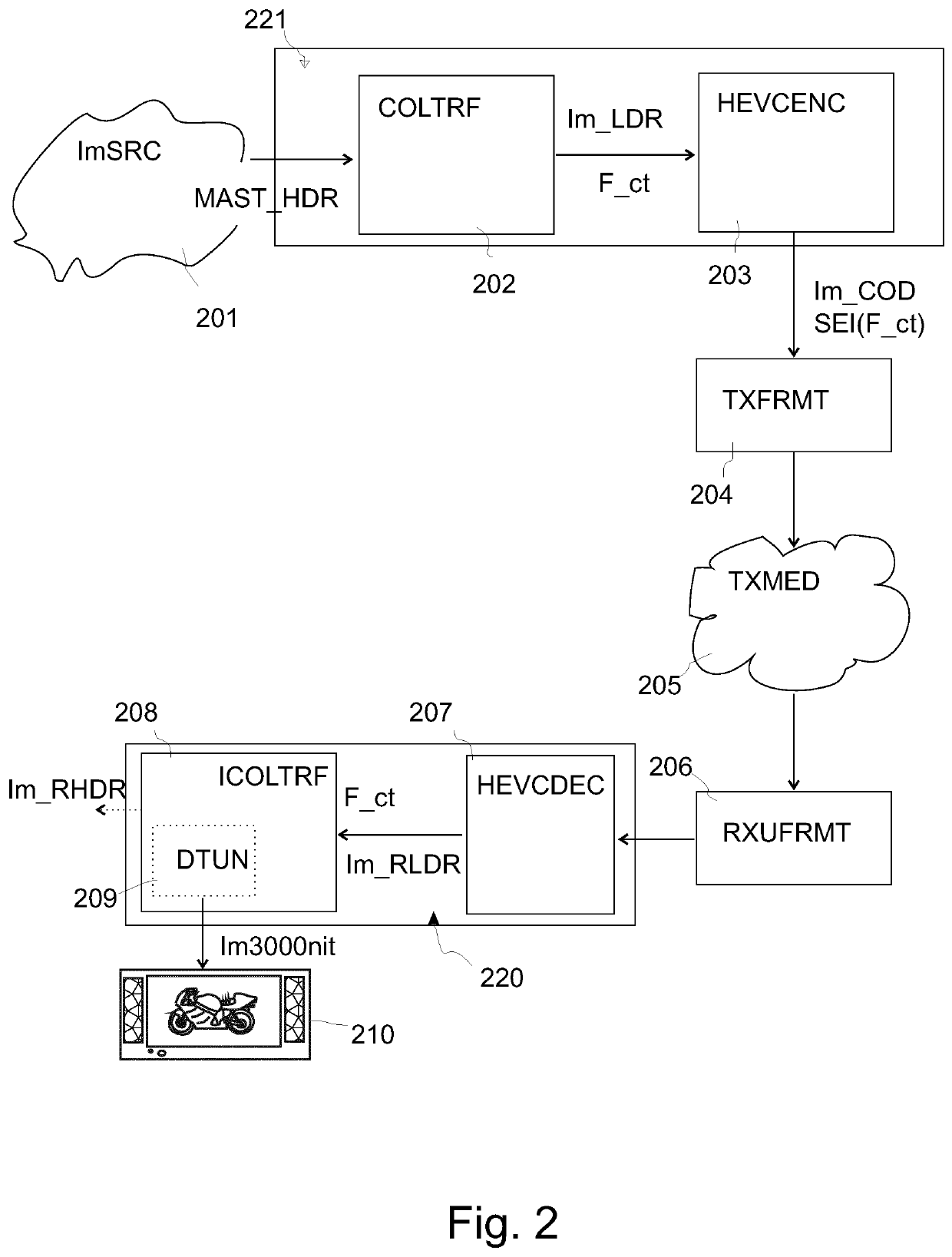Improved high dynamic range video color remapping
- Summary
- Abstract
- Description
- Claims
- Application Information
AI Technical Summary
Benefits of technology
Problems solved by technology
Method used
Image
Examples
Embodiment Construction
[0143]The elucidation of our various embodiments now focuses on the luminance processor (501) part of FIG. 5, which is re-drawn in a more elaborate configuration to elucidate the new principles of the present invention in FIG. 6.
[0144]Firstly, although we will elucidate assuming that the processing happens on the linear luminance, i.e. luminance L comes in and goes out (Lout), even though inside that branch the processing may convert to another luma domain like PQ, the same can also be done in other luma domains, e.g. typically with the classical Rec. 709 luma, i.e. sqrt(L) luma Y′ (i.e. the luminance mapping of the dynamic range conversion by luminance mapper 512 may in such a scenario be directly specified as Y′_out=FLM*(Y′_in)).
[0145]However, in such a situation one must take care that instead of the non-constant-luminance luma one calculates a corresponding constant-luminance-luma (to make sure the luminance processing behaves correctly as a linear luminance processing even thou...
PUM
 Login to View More
Login to View More Abstract
Description
Claims
Application Information
 Login to View More
Login to View More - R&D
- Intellectual Property
- Life Sciences
- Materials
- Tech Scout
- Unparalleled Data Quality
- Higher Quality Content
- 60% Fewer Hallucinations
Browse by: Latest US Patents, China's latest patents, Technical Efficacy Thesaurus, Application Domain, Technology Topic, Popular Technical Reports.
© 2025 PatSnap. All rights reserved.Legal|Privacy policy|Modern Slavery Act Transparency Statement|Sitemap|About US| Contact US: help@patsnap.com



